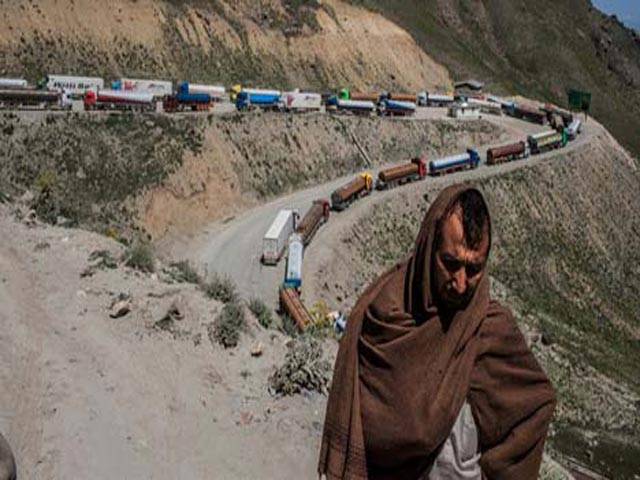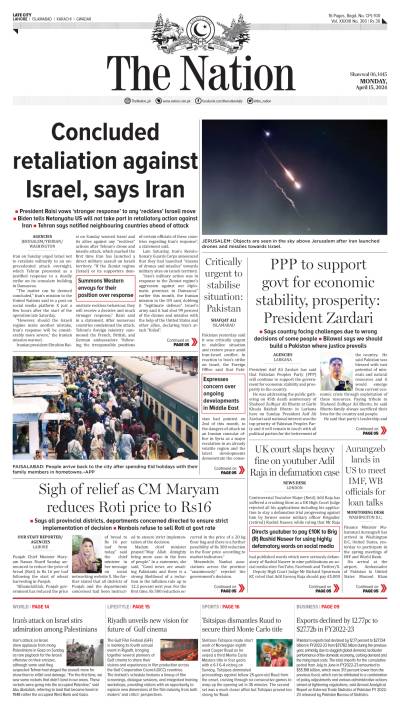Nowhere is the impact of Pakistan’s ban on NATO truck traffic more visible than here at the top of the Hindu Kush, on one of the only alternative overland routes for supply convoys to reach Kabul and the rest of the country.
For 20 miles north and south of the old Soviet-built tunnel at Salang Pass, thousands of trucks are idled beside the road, waiting for a turn to get through its perilous, one-and-a-half-mile length, The New York Times reported Sunday.
This is the only passable route for heavy truck traffic bringing NATO supplies in from the Central Asian republics to the north, as they now must come.
There are other roads, but they are often single-lane dirt tracks through even higher mountain passes, or they are frequently subject to ambushes by insurgents and bandits. So a tunnel built to handle 1,000 vehicles a day, and until the Pakistani boycott against NATO in November handling 2,000, now tries, and often fails, to let 10,000 vehicles through, alternating northbound and southbound truck traffic every other day.
“It’s only a matter of time until there’s a catastrophe,” said Lt. Gen. Mohammad Rajab, the head of maintenance for the Salang Pass. “One hundred percent certain, there will be a disaster, and when there is, it’s not a disaster for Afghanistan alone, but for the whole international community that uses this road.” He said 90 percent of the traffic now was trailer and tanker trucks carrying NATO supplies.
The tunnel near the top of this 12,000-foot pass is so narrow, no more than 20 feet across at the base, and less toward the top, that the heavily laden trucks often jam as they try to pass one another, lodging in tightly against the sloping, rough-hewn walls. The trucks have to be winched apart and dragged out by heavy equipment.
Other trucks get stuck when their drivers deliberately underestimate their overhead clearance, the tunnel is 16 feet high, but only in the very center.
“It’s a nightmare,” one tank truck driver said.
The tunnel lighting does not work, nor do closed-circuit television cameras installed to warn of problems. The tunnel’s roof leaks water, rendering the savagely potholed road surface a mixture of mud, chopped-up asphalt and broken concrete. Ventilator fans in most of the tunnel are out of order, leading to such high levels of carbon monoxide that officials are talking about a system to pump emergency oxygen in, General Rajab said.
The roadway, with only patches of paving, has ruts so deep that trucks sometimes just tip over on their sides, as happened last week with a tanker truck carrying fuel for NATO. It flipped over just south of the main tunnel, cracking the tank and spawning a small stream flowing down the steep switchbacks, which enterprising Afghans quickly diverted into makeshift canals and impoundments so they could carry out the dangerous work of filling containers from the flow.
That was the second day in a row that a truck tipped over near the top of the pass, blocking all daytime traffic for most of those two days. In between, the road opened at night, but then a NATO military convoy came along, forcing all civilian truck traffic to cease for 12 hours, General Rajab said.
With the increased traffic and the deterioration of the roads it has caused, a journey that used to take a day, from Kabul to Hairatan, a fuel and freight depot town on the northern border with Uzbekistan, now requires 8 to 10 days for trucks, according to interviews with many drivers. For cars it takes two days.
The much-shorter Pakistani routes, from seaports like Karachi on better roads, were closed to protest the deaths of 24 Pakistani soldiers in an American airstrike. But Pakistan has expressed willingness to reopen the frontier: for a fee of thousands of dollars per truck, compared with $250 previously.
The Salang Pass tunnel, built in 1964 by the Soviets and never completely finished (it lacks amenities like interior surfacing of the walls and an escape tunnel), has a tragic history. Nine hundred Russians and Afghans reportedly died of asphyxiation in the tunnel in 1982 when a military convoy was trapped inside by an accident or an explosion.
Two years ago, huge avalanches at the southern mouth of the tunnel killed at least 64 people, buried alive in cars and buses.
General Rajab says he worries that the tunnel could even collapse, no thorough overhaul has ever been done, he said, because the route is too vital to close long enough for major repairs.
“It’s crazy to use this road; there are just too many problems,” he said. “They should open an alternative or we will never solve this.”
A spokesman for the NATO-led International Security Assistance Force, Lt. Col. Jimmie Cummings, said the military had no comment. “We do not discuss the particular road routes that we use for movements of logistics,” he said.
The only remotely viable alternative route, General Rajab said, is over the Shibar Pass, farther west. It involves a three-day detour, which could be an improvement over Salang these days. However, the military would have to work at improving security on that route, he said when he recently detoured trucks that way, they were looted before reaching the pass.
Tuesday, April 16, 2024
US-Pakistan freeze chokes fallback route in Afghanistan

8:46 PM | April 15, 2024
8:44 PM | April 15, 2024
Meghan Markle demanding a grovelingly apology for the past
10:38 PM | April 15, 2024
Child Marriage Act: LHC terms difference in gender-based age criteria 'discriminatory'
10:37 PM | April 15, 2024
Elon Musk reveals 'crucial fact' about all-powerful Starship
10:35 PM | April 15, 2024
Aseefa Bhutto Zardari sworn in MNA
10:27 PM | April 15, 2024
Iranian President Raisi to visit Pakistan on April 22
10:26 PM | April 15, 2024
Policing Reforms
April 15, 2024
Storm Safety
April 15, 2024
Deterrence Restored
April 15, 2024
IMF Challenges
April 14, 2024
Security Crisis
April 14, 2024
Suicide awareness
April 15, 2024
Biden’s dilemma
April 15, 2024
Over dependence on technology
April 14, 2024
Education reform call
April 14, 2024
Brain drain
April 14, 2024
ePaper - Nawaiwaqt
Advertisement
Nawaiwaqt Group | Copyright © 2024





